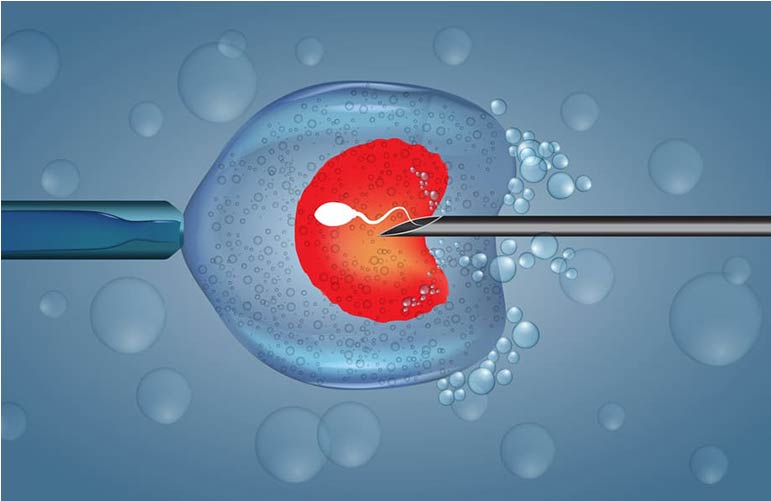
Intracytoplasmic Sperm Injection (ICSI)
Before a man's sperm can fertilize a woman's egg, the sperm's head must attach to the egg's surface. Once attached, the sperm pushes through the egg's outer layer to the inside (cytoplasm), where fertilization occurs.
For a variety of reasons, sperm cannot always penetrate the outer layer. The outer layer of the egg may be thick or difficult to penetrate, or the sperm may be unable to swim. In these cases, intracytoplasmic sperm injection (ICSI) can be used in conjunction with in vitro
(IVF) to help fertilize the egg. A single sperm is injected directly into the cytoplasm of the egg during ICSI.
How does ICSI work?
IVF can fertilize an egg in two ways: traditionally and through ICSI. In traditional IVF, 50,000 or more swimming sperm are placed in a laboratory dish next to the egg. Fertilization occurs when one of the sperm enters the egg's cytoplasm. A tiny needle called a micropipette is used in the ICSI procedure to inject a single sperm into the center of the egg. Once fertilization occurs, either traditional IVF or ICSI, the fertilized egg grows in a laboratory for 1 to 5 days before being transferred to the woman's uterus.
Why you need ICSI?
ICSI aids in the treatment of infertility issues such as:
- The male partner produces insufficient sperm for artificial insemination (intrauterine insemination [IUI]) or in vitro fertilization (IVF).
- It is possible that the sperm will not move normally.
- The sperm may struggle to attach to the egg.
- A clog in the male reproductive tract may prevent sperm from exiting.
- Traditional IVF has not resulted in the fertilization of eggs, regardless of the condition of the sperm.
- The eggs are matured in vitro.
- Eggs that had previously been frozen are being used.
If a woman becomes pregnant naturally, her baby has a 1.5 percent to 3 percent chance of having a major birth defect. The risk of birth defects associated with ICSI is comparable to that of IVF, but slightly higher than that of natural conception.
Infertility rather than treatments to overcome infertility may be responsible for the slightly increased birth defect risk.
